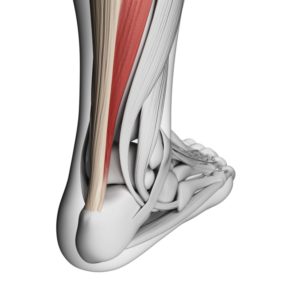 Achilles tendinitis is a common condition that affects the largest tendon in your body, which is located on the back of your leg near the heel. This is where your Achilles tendon sits, and its job is to connect the calf muscles to the heel bone and facilitate foot movements like walking, bending, running and jumping. It is a very strong tendon that can handle a great amount of stress, but it is also prone to tendinitis development due to overstress and degeneration over the years. Today, we take a closer look at the condition, and we share some treatment and prevention tips.
Achilles tendinitis is a common condition that affects the largest tendon in your body, which is located on the back of your leg near the heel. This is where your Achilles tendon sits, and its job is to connect the calf muscles to the heel bone and facilitate foot movements like walking, bending, running and jumping. It is a very strong tendon that can handle a great amount of stress, but it is also prone to tendinitis development due to overstress and degeneration over the years. Today, we take a closer look at the condition, and we share some treatment and prevention tips.
Achilles Tendinitis Causes and Symptoms
Achilles tendinitis is caused by the development of inflammation in the Achilles tendon. When tendinitis develops in the Achilles, it presents itself in one of two forms:
Noninsertional Achilles Tendinitis – In cases of noninsertional Achilles tendinitis, fibers in the middle portion of the tendon have begun to break down with degenerative tears. The area responds to this degeneration by swelling and thickening, and this is where tendinitis sets in. This type of tendinitis is typically more common in young, active people who are overstressing the tendon.
Insertional Achilles Tendinitis – This type of tendinitis affects the lower portion of the heel, where the tendon attaches to the heel bone. This generally involves degeneration over a longer period of time, and typically affects an older population.
Symptoms of the condition include pain or stiffness along the Achilles tendon, especially in the morning, severe pain after exercising, swelling, limited range of motion in the ankle and a thickening of the tendon.
Causes of Achilles tendinitis include:
- Sudden increase in exercise and activity.
- Tight calf muscles.
- Bone spur development in the area putting pressure on the tendon.
- Overstress/Degeneration with age.
Achilles Tendinitis Diagnosis and Treatment
If you believe you’re dealing with Achilles tendinitis, you’ll want to set up a consultation with a foot specialist. Your doctor will examine your foot and then conduct imaging tests to confirm the diagnosis. An x-ray can help determine if the tendon has become partly calcified. An MRI may also be ordered, but usually only if a tear is suspected and surgery is on the table.
In most cases, Achilles tendinitis can be treated nonsurgically. Treatment won’t reverse the tendinitis, but it can help provide pain relief. The most common forms of nonsurgical treatment include:
- Rest
- Ice
- Anti-Inflammatory medications
- Low-impact exercises like cycling or swimming
- Physical therapy
- Calf strengthening exercises
- Heel drop exercises
- Cortisone injections
- Supportive orthotics and shoes
- Walking boots
Surgery is not often needed, but if pain remains after six months of nonsurgical treatment, your doctor may re-examine the tendon to determine if surgery would be a viable option. If your tendinitis is the result of a tight calf muscle, your surgeon may be able to perform a gastronemius recession, which is a procedure to lengthen the calf muscles and take pressure off the tendon. You may also undergo a debridement operation if a bone spur or calcified deposit is rubbing the tendon and contributing to the condition.
For more information about caring for Achilles tendinitis, contact Dr. Silverman’s office today.